The "Review Received" trigger is designed to operate independently of specific contacts, meaning that the reviews are not associated with any individual customer. This allows for broader automation of actions based on incoming reviews from platforms like Facebook and Google.
The "Reviews Received" workflow trigger enables you to automate actions in response to new reviews from Facebook or Google. With this feature, you can apply various filters to customize your workflow according to specific criteria related to the incoming reviews. This flexibility helps streamline your response processes and enhances customer engagement.
1. Start by clicking Marketing tab to enter the workflow.
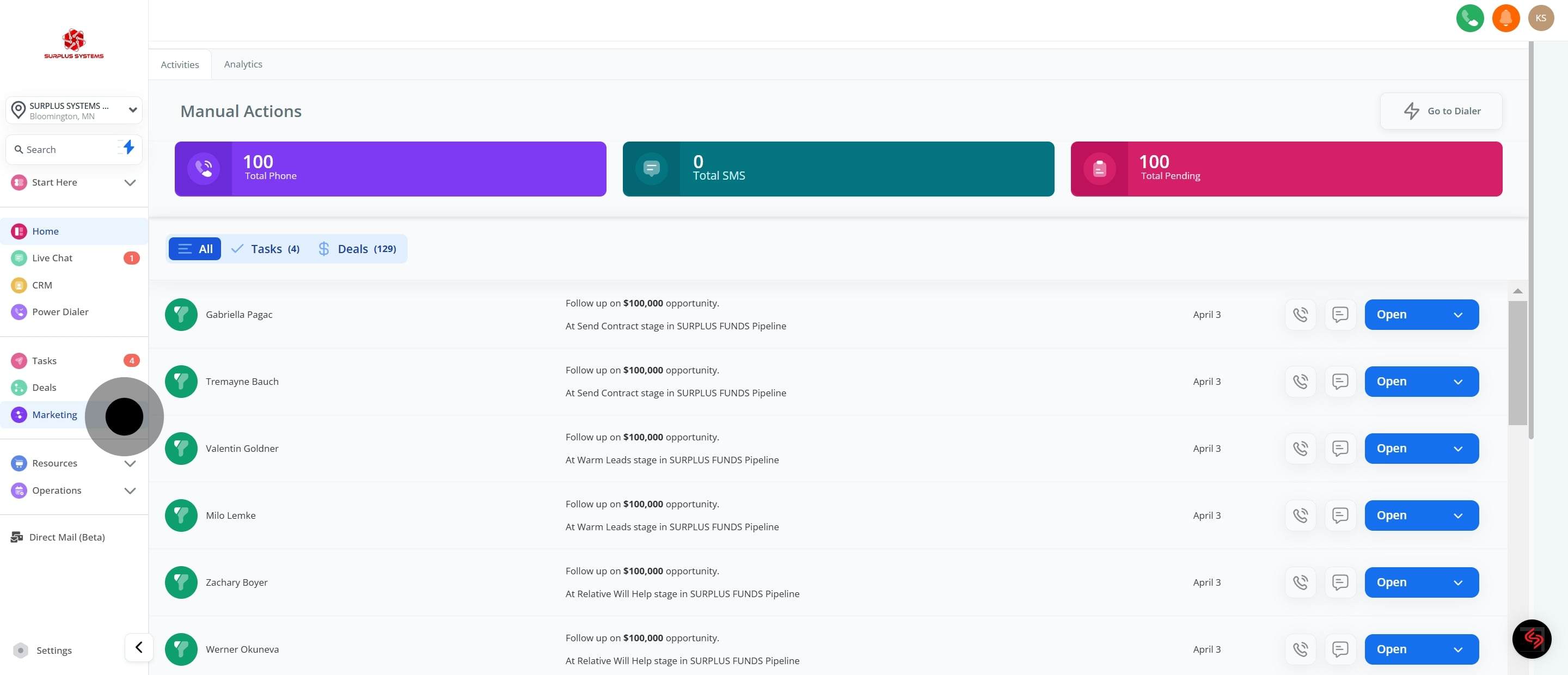
This trigger enables you to automate actions whenever new reviews are submitted on Facebook or Google. You can apply various filters to these reviews, allowing you to customize your workflow according to specific criteria, which enhances your ability to respond effectively.
2. Next, select Automation option.
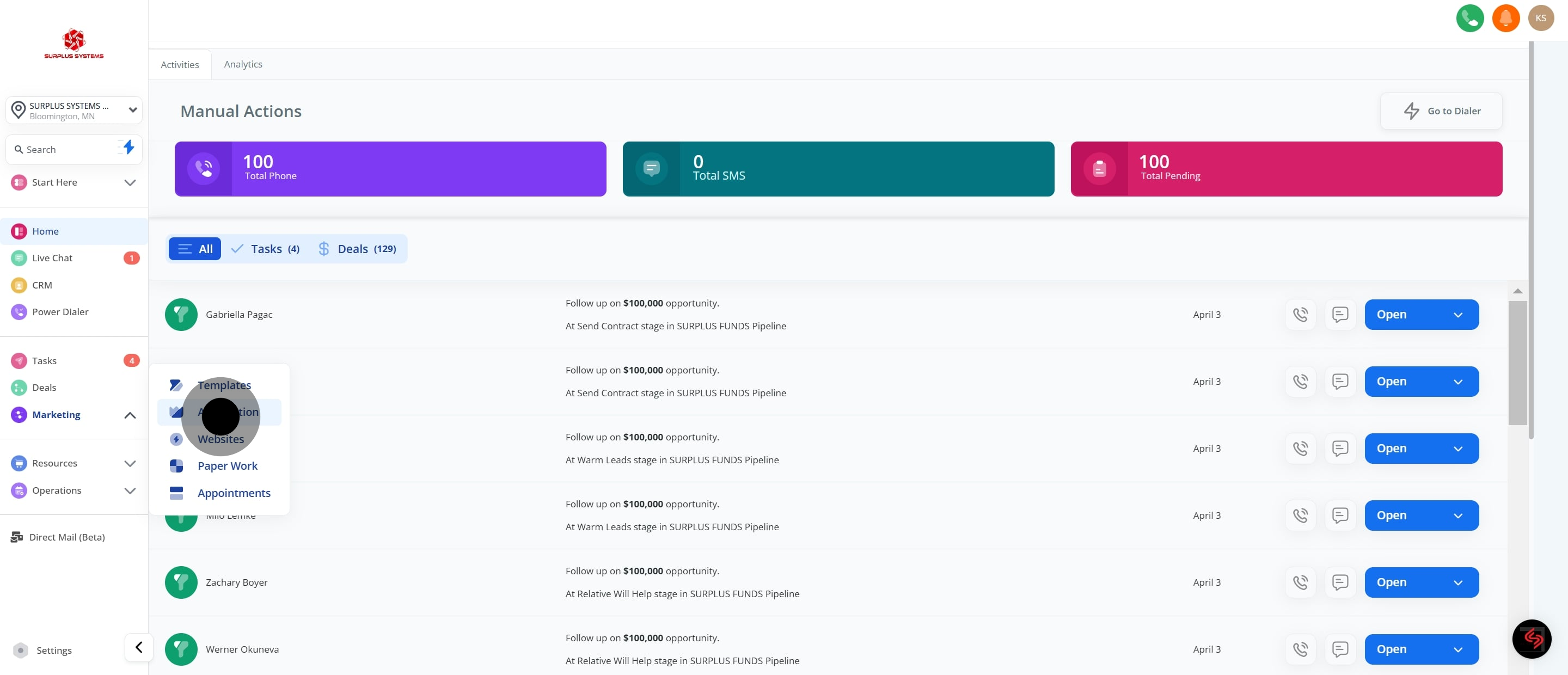
3. Step 1: Configure the Workflow Trigger Go to the Workflow section and click on "Create New Workflow" or select an existing one to edit.
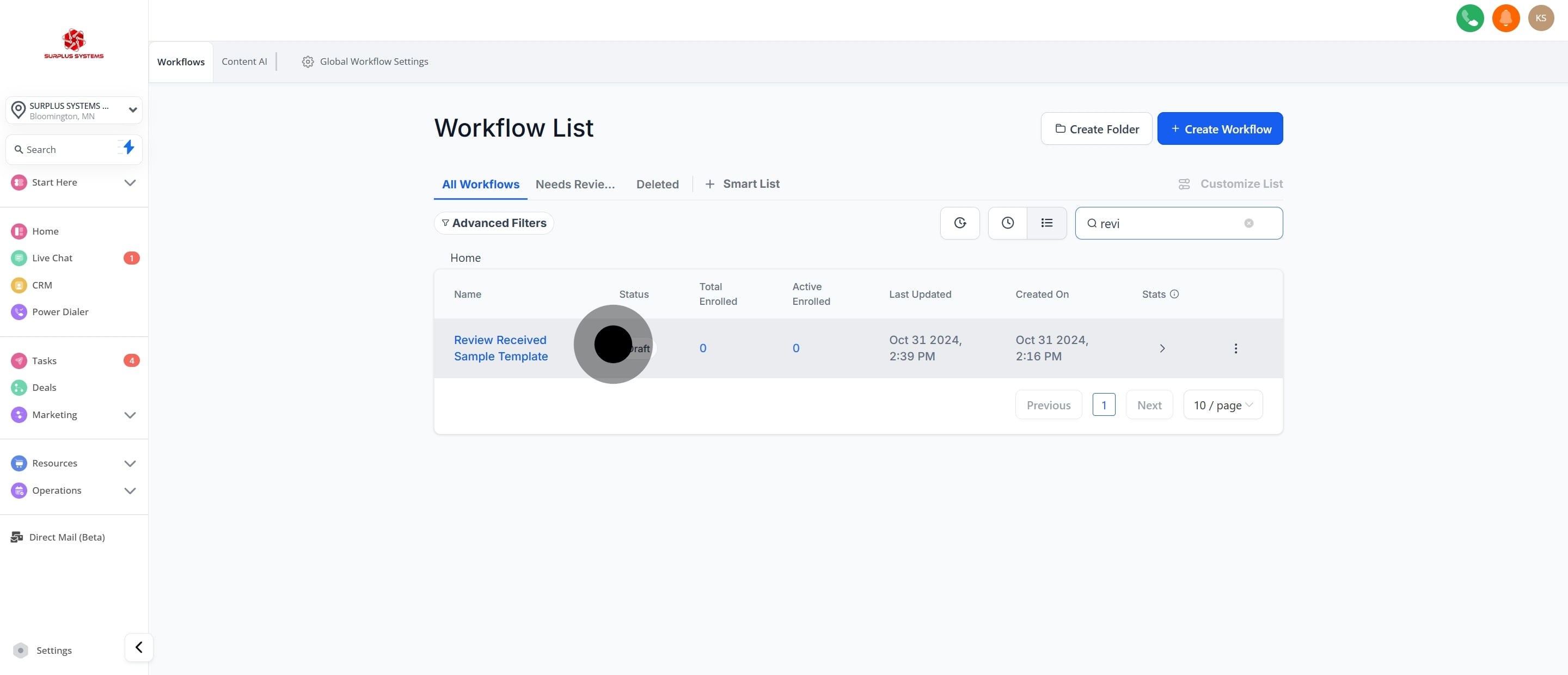
4. In the trigger options, choose "Review Received" to set this as the trigger for your workflow.
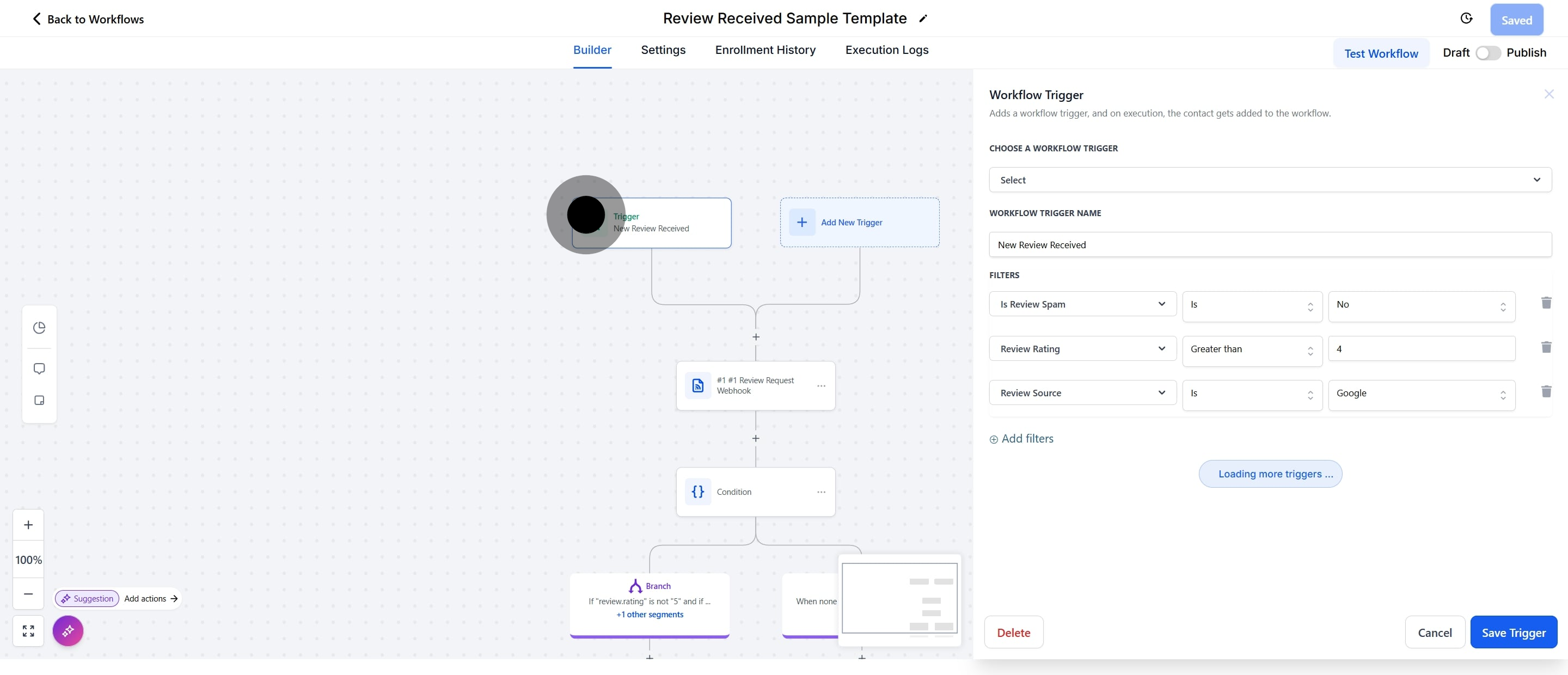
5. Step 2: Apply Review Filters for Targeted Actions Customize your workflow by adding filters to trigger specific actions based on review details. Here are the main filters: 1. Review SPAM Choose "Yes" or "No" to handle spam reviews automatically. This lets you set actions based on whether a review is marked as spam.
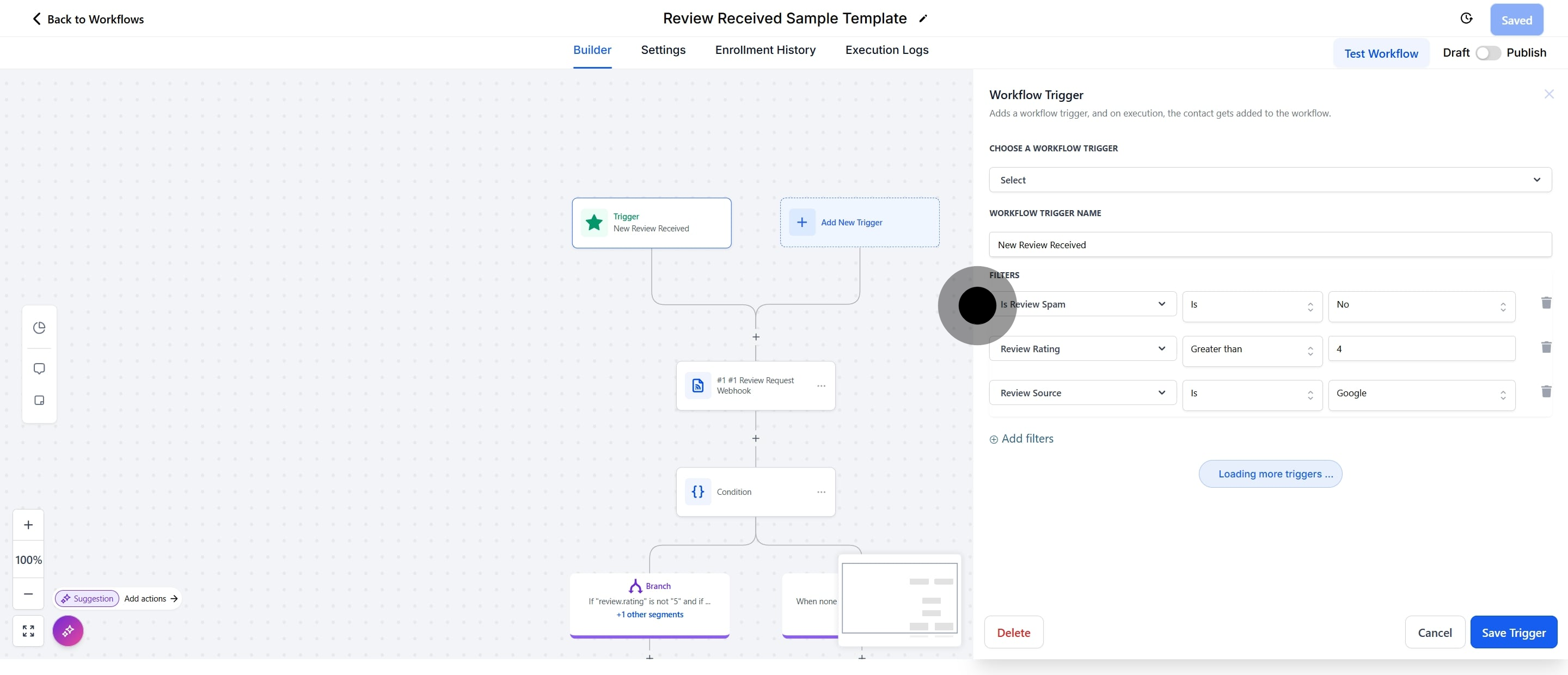
6. 2\. Review Rating Filter reviews by star rating (1 to 5). For instance, you might set different actions to automatically thank customers for 5-star reviews or follow up on concerns for 1-2 star reviews. 3\. Review Source Use this filter to differentiate between reviews from Google and Facebook. By mapping actions separately, you can tailor responses based on the platform where the review was posted.
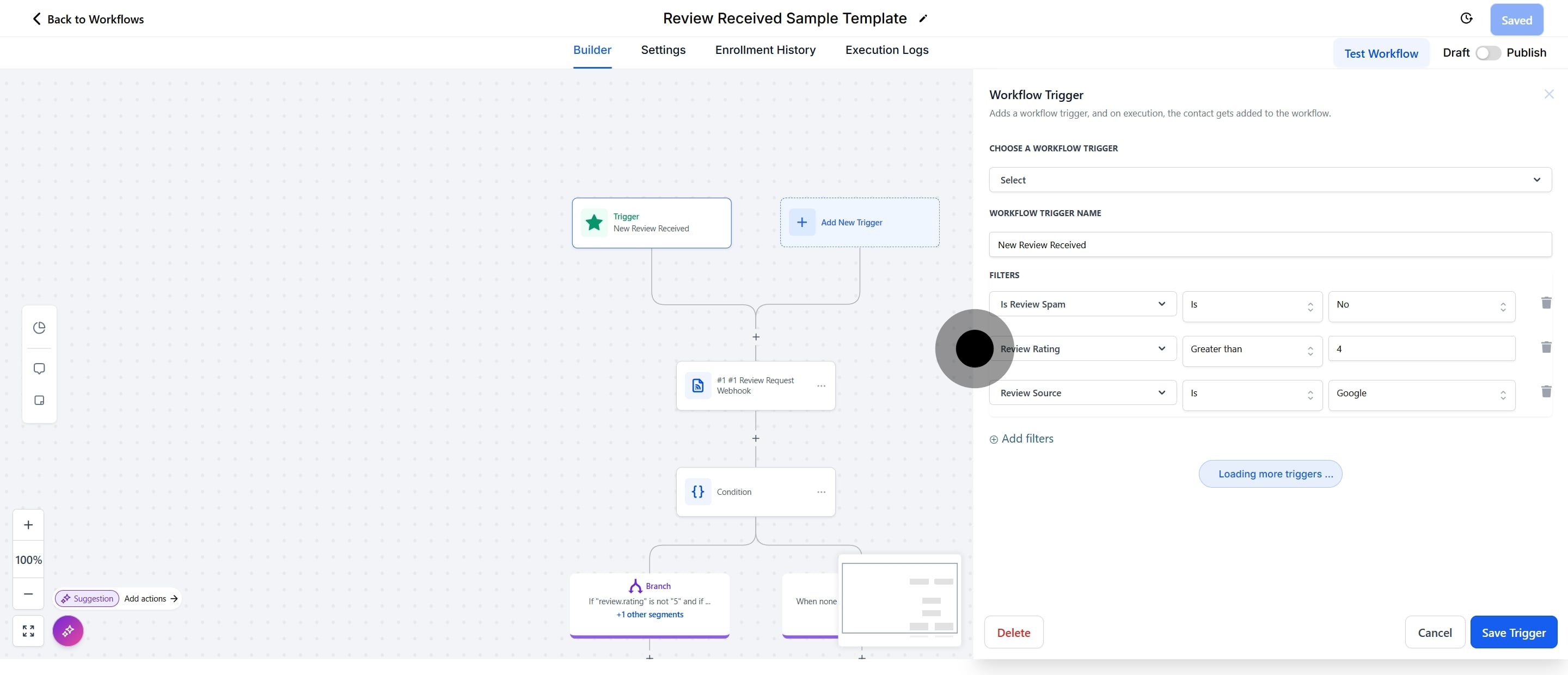
7. Step 3: Assign Automated Actions to Review Details After setting up the workflow trigger and applying filters, map specific review details to automated actions within the workflow. This setup allows you to take advantage of advanced automation in your reputation management, enabling tailored responses based on each review's attributes.
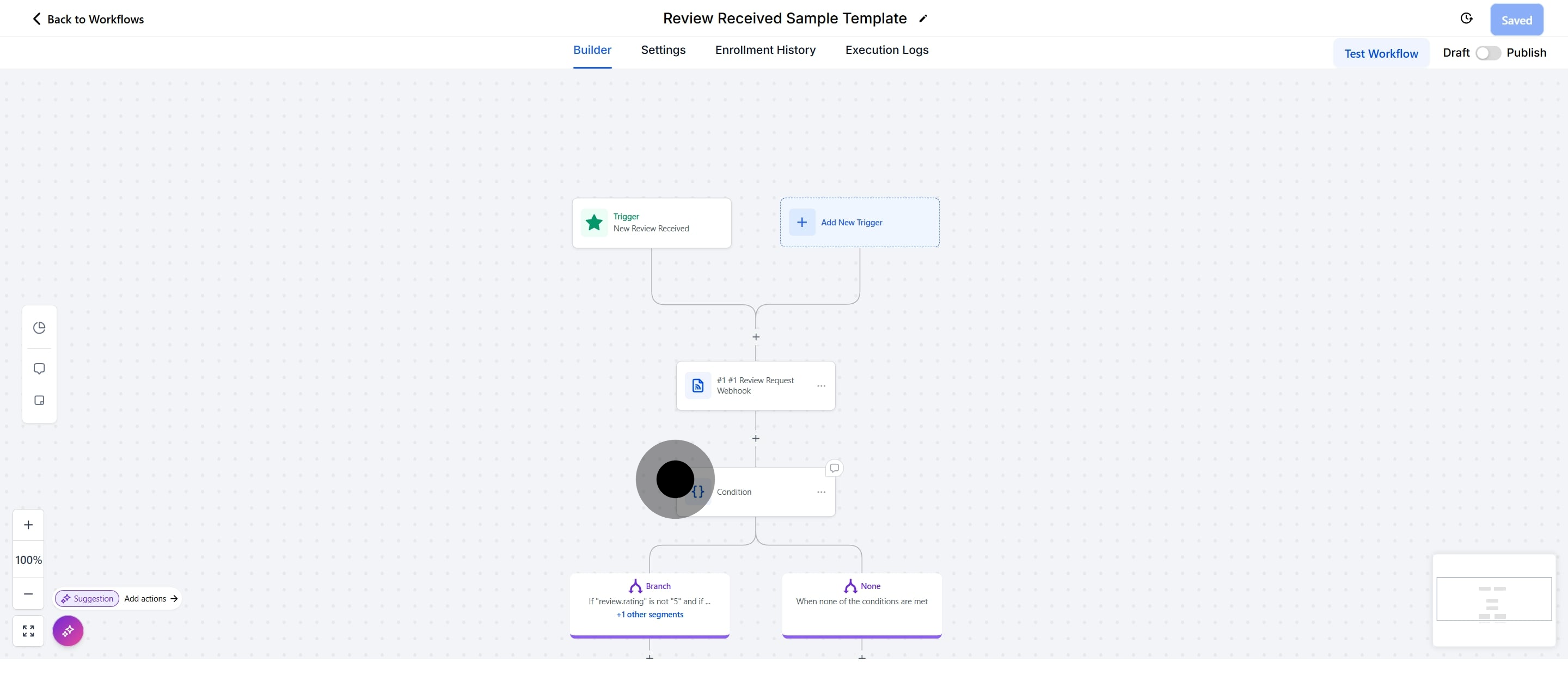
8. The mapped review details can trigger a range of automated actions, allowing the workflow to operate seamlessly. This functionality enables you to send review data to various actions within the workflow, enhancing responsiveness. Additionally, you can configure the system to pass the review information to a webhook or other automated response systems, facilitating integration with external applications for improved workflow efficiency.
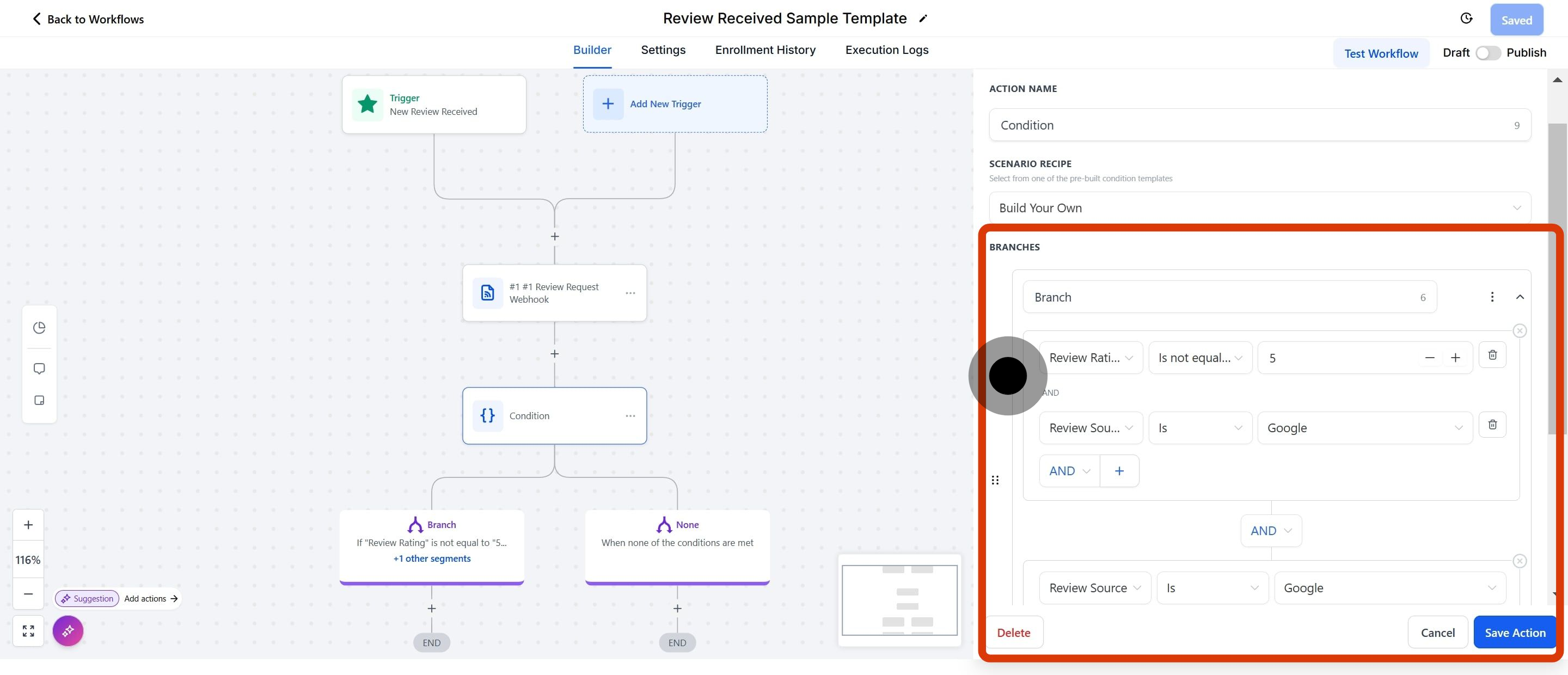
9. Step 4: Save and Test Your Workflow After configuring the filters and mapping the actions, click "Save" to finalize your workflow. To ensure everything is functioning correctly: Test the workflow by submitting a review or simulating one to verify that the automation triggers as intended. Make any necessary adjustments to conditions or actions based on the results of your test.
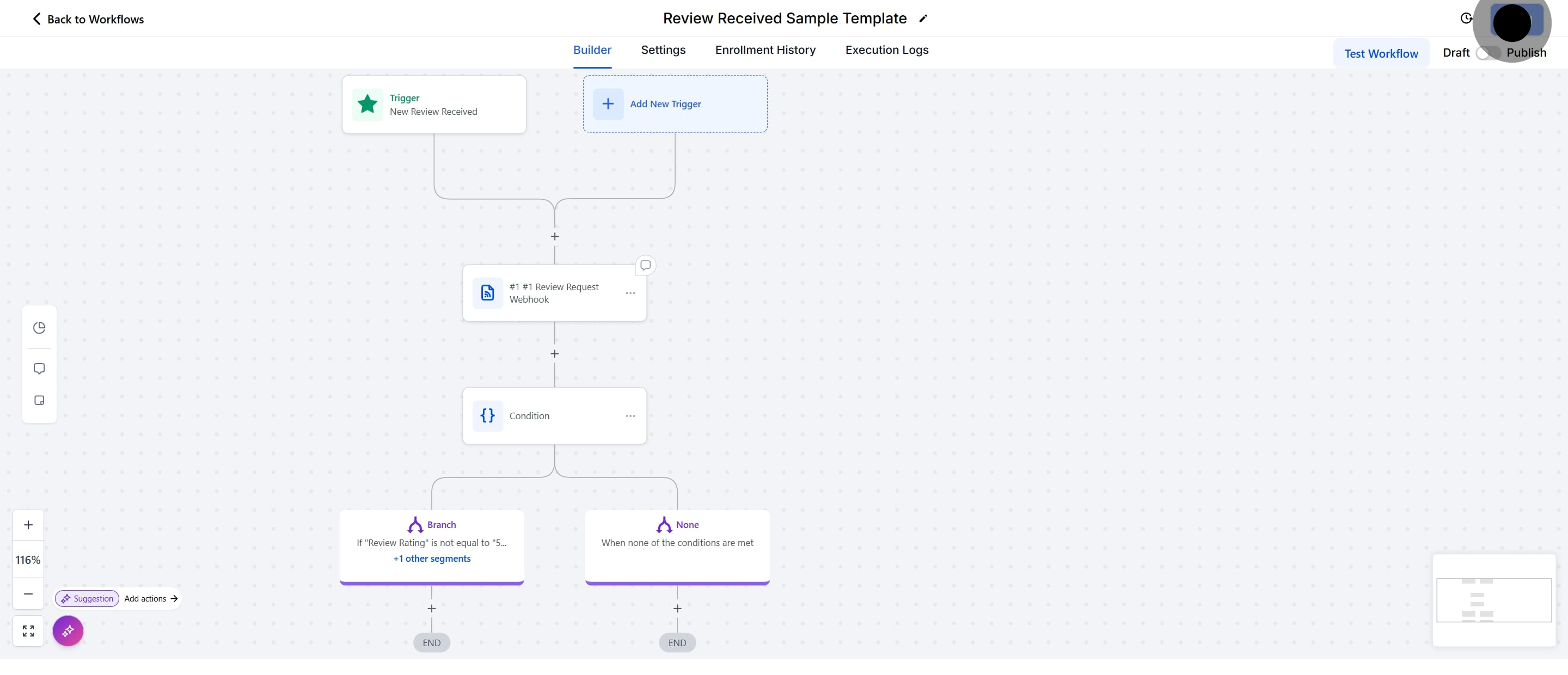


Conclusion
By implementing workflow triggers for new reviews on Facebook and Google, along with filters for review rating, source, and spam status, you can automate responses and effectively manage your online reputation. This approach not only saves time but also ensures consistent engagement with your customers, ultimately enhancing overall customer satisfaction.










